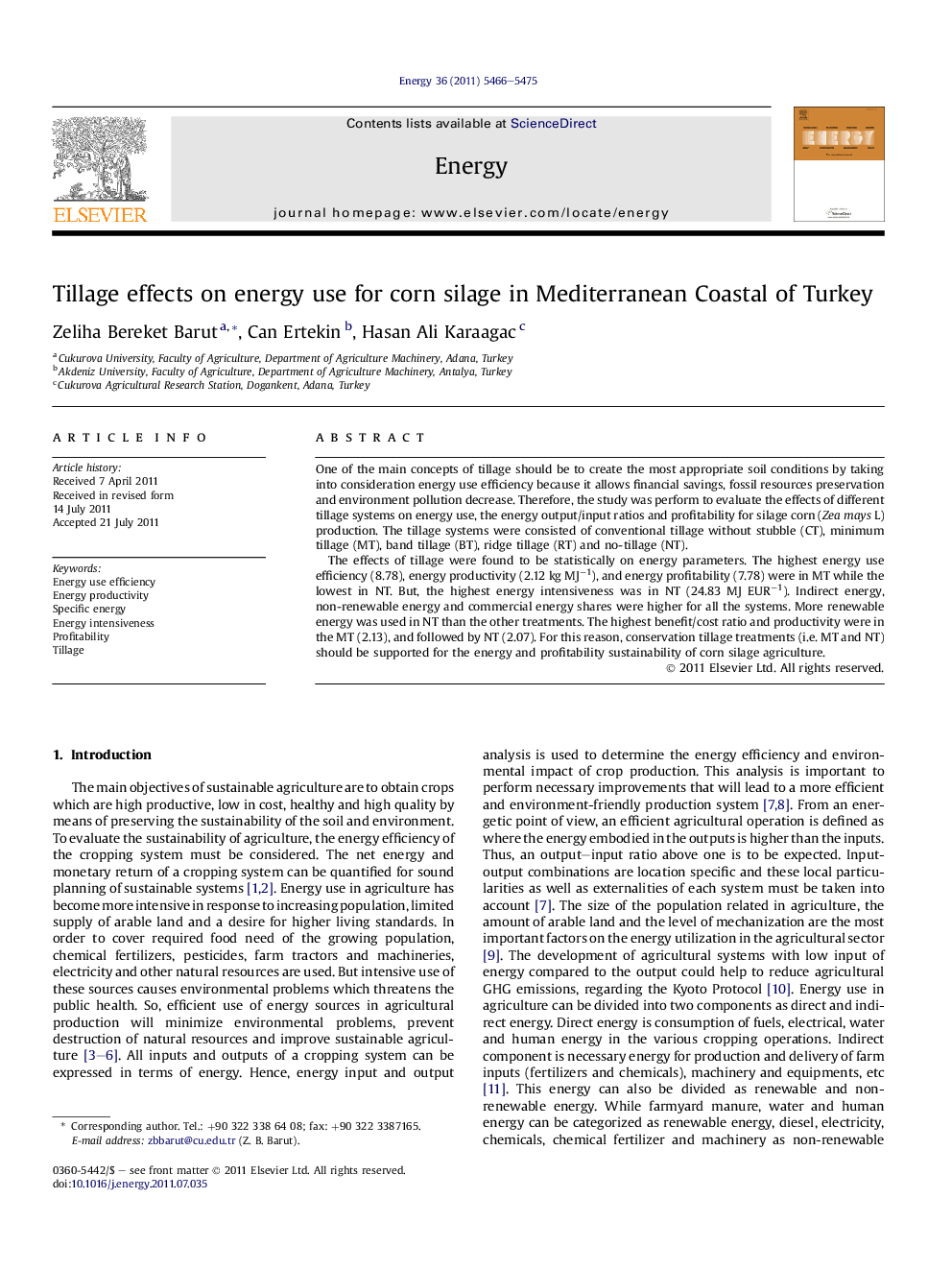| Article ID | Journal | Published Year | Pages | File Type |
|---|---|---|---|---|
| 1734568 | Energy | 2011 | 10 Pages |
One of the main concepts of tillage should be to create the most appropriate soil conditions by taking into consideration energy use efficiency because it allows financial savings, fossil resources preservation and environment pollution decrease. Therefore, the study was perform to evaluate the effects of different tillage systems on energy use, the energy output/input ratios and profitability for silage corn (Zea mays L) production. The tillage systems were consisted of conventional tillage without stubble (CT), minimum tillage (MT), band tillage (BT), ridge tillage (RT) and no-tillage (NT).The effects of tillage were found to be statistically on energy parameters. The highest energy use efficiency (8.78), energy productivity (2.12 kg MJ−1), and energy profitability (7.78) were in MT while the lowest in NT. But, the highest energy intensiveness was in NT (24.83 MJ EUR−1). Indirect energy, non-renewable energy and commercial energy shares were higher for all the systems. More renewable energy was used in NT than the other treatments. The highest benefit/cost ratio and productivity were in the MT (2.13), and followed by NT (2.07). For this reason, conservation tillage treatments (i.e. MT and NT) should be supported for the energy and profitability sustainability of corn silage agriculture.
► We evaluate the effects of different tillage systems on energy use efficiency and profitability for silage corn. ► The energy use efficiency and profitability are better in minimum tillage. ► Renewable energy is used more in no-tillage. ► Conservation tillage treatments lead to sustainability of energy use and profitability for silage corn production.
